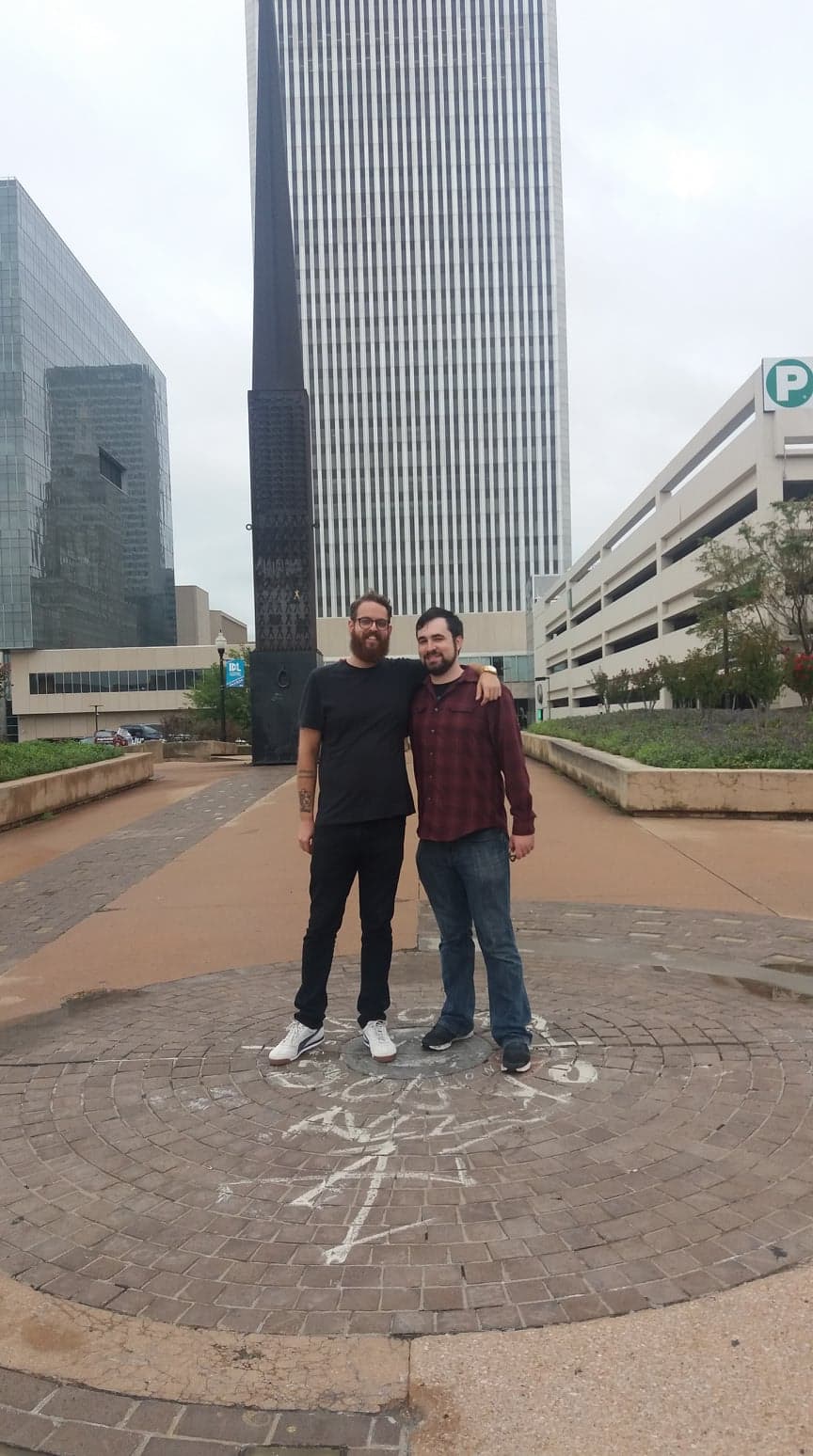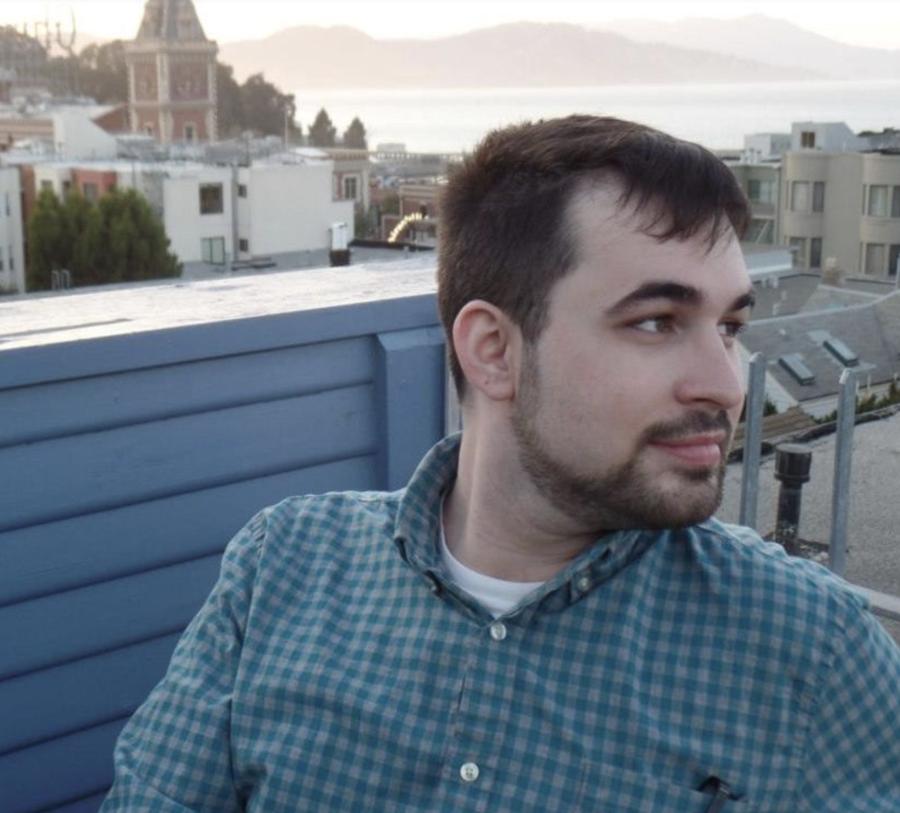MAPH Alum Ryan Wolf has a new book, Watches and Warnings, published and was kind enough to answer some questions for us!
What is your favorite part of the work you do?
Writing has its own rewards and ecstatic qualities. I don't know if I could pinpoint my favorite part of the process. I loved seeing the final product of Watches and Warnings -- I am so grateful for what the publishing team at West 44 did with the art and design. Seth Hughes captured the tone of the book perfectly with his artwork, and I owe so much to my editor, Caitie McAneney, for the book's existence. It's been surreal to have a physical object out in the world that complete strangers are interacting with.
In terms of my nonprofit work, I'm always amazed when the grant writing and fundraising I do leads to new programs or building improvements. It's very gratifying to know I've played a key role in making the places I work with not only function, but also grow and expand. Also, it's fun when I see the visual materials I create used for events and marketing.
What did you do during your time in MAPH that prepared you for the work you are doing now?
While I was in the MAPH program, I was also involved in an internship for University of Chicago's Alumni Relations & Development. I wrote gift acknowledgements and performed updates to UChicago's donor database. After graduating, I was hired to work as a Development Assistant at a nonprofit in Chicago's North Lawndale neighborhood. I credit my internship for giving me the critical experience I needed to be hired for this role.
In terms of my creative writing, I'm thankful for the intellectual space that the MAPH program provided. MAPH's interdisciplinary approach offers students a great deal of flexibility in selecting courses. This allowed me to contemplate and learn more about issues and topics that were meaningful to me.
Tell us about your book!
Sixteen-year-old Philip is the son of two Evangelical youth pastors. He also secretly helps his older brother pay for his heroin addiction. When a massive tornado touches down in their small town, Philip's family gets heavily involved in the post-disaster cleanup. The family must also contend with the surprise homecoming of its most prodigal member. With his life swept into sudden chaos, Philip grapples with questions that cut him to the core.
How did you start working on Watches and Warnings? How did the idea come to you and how did you go about the creative process?
The initial kernel of inspiration came to me in 2017, when I heard a radio story about how Hurricane Harvey led to a spike in people visiting methadone clinics in Houston, since the storm had cut addicts off from their access to heroin and other opioids. When I was provided with the opportunity to pitch a concept for a young adult book to West 44, an imprint of Rosen Publishing in New York City, the radio story came to mind. In my pitch, I focused on a tornado instead of a hurricane, set the book in Oklahoma rather than Texas, and created a more intimate narrative surrounding the "cold turkey" detox process.
By pairing a broken town's recovery from a natural disaster with a broken character's recovery from opioid addiction, I hoped the analogy could be embodied in the plot itself. Watches and Warnings is about destruction and rebuilding. I tried to carry this pattern through all levels of the novel, grafting it onto spiritual and metaphysical questions as well. Since this was a young adult book, it was important for me to create something existentially intense that I would have personally connected to when I was in high school. In Watches and Warnings, I was addressing my younger self head-on, attempting to appreciate the fears and doubts I once experienced in a way that wasn't condescending or simplistic.
The creative process for the book was quite unique, since it was crafted for high schoolers who might be reluctant to read. The free verse format of Watches and Warnings is meant to make the text more accessible. I had to trim down the manuscript to ensure there was enough blank space on the pages. Editing was probably more difficult than the writing itself, since I needed to carefully whittle down my vision. This made the text much sharper, leaner, and more direct.
What kind of work have you done since finishing MAPH?
I've worked at two different nonprofits in Illinois and engaged in a heavy amount of freelance writing. This August, I am slated to have a few more works released, including another verse novel for young adults and a series of children's chapter books. I also have been ghostwriting, developing non-fiction educational material, and working on other creative projects.
I keep in touch long-distance with many of my friends from the MAPH program. I'm grateful to MAPH alumni Joshua Davidson and Thomas Morrison for reading drafts of my work, including material that hasn't found a home yet. Thomas was also kind enough to join me on a Watches and Warnings research trip to Tulsa, Oklahoma in 2018 (pictured below).

Tell me more about your work as a grant writer for nonprofits.
I've worked for BBF Family Services in North Lawndale and Oak-Leyden Developmental Services in Oak Park. While at these places, I secured grants from public funding sources and private foundations. Grant writing is a cooperative process, since a great degree of planning and information-sharing is involved, and each grant assignment is quite different. It's always satisfying when an application is successful, since it genuinely does make a difference for the nonprofit.

